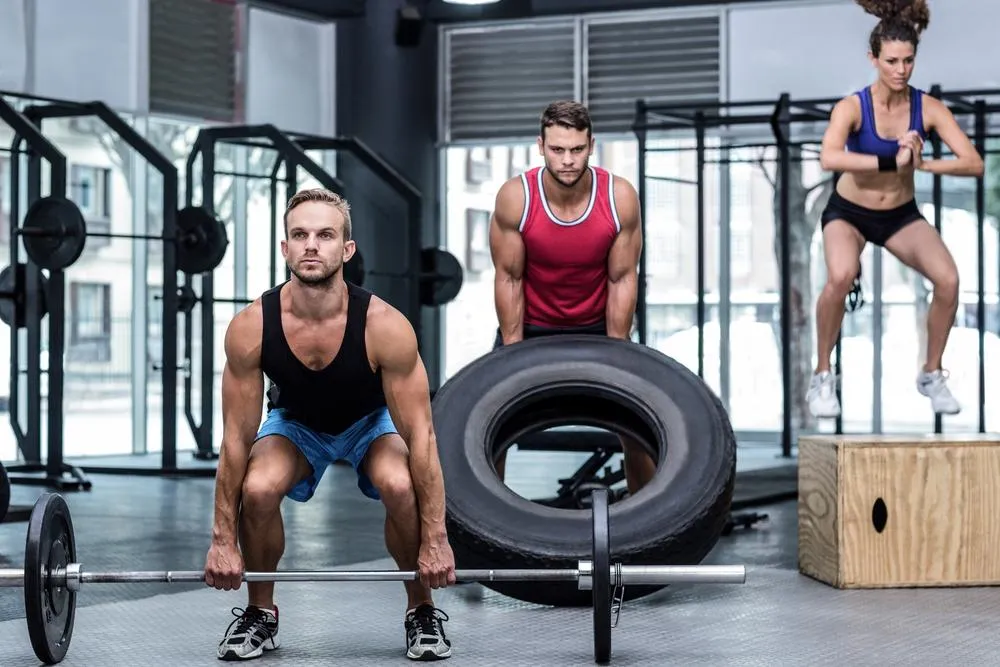
CrossFit Injury Prevention: Protect Your Shoulders During Olympic Lifts
Shoulder injuries are among the most common challenges athletes face during CrossFit workouts. The high-intensity movements in Olympic lifts such as snatches, cleans, and jerks require strength, mobility, and stability, all working in perfect balance. When that balance falters, even slightly, it can lead to a CrossFit injury that sidelines progress and undermines confidence. The good news is that most shoulder injuries can be prevented through proper technique, mobility work, and intelligent recovery strategies.
Why Shoulders Are Vulnerable in Olympic Lifts
The shoulder joint is one of the most mobile structures in the human body, but that freedom of movement also makes it one of the most unstable. During Olympic lifts, athletes rely heavily on shoulder rotation, scapular control, and thoracic extension. When one of these elements is limited, such as poor thoracic mobility or weak rotator cuff muscles, compensations occur, placing excessive strain on the tendons and ligaments that stabilize the joint.
Common mistakes include pressing the bar too far forward, pulling with the arms too early, or failing to keep the bar path close to the body. Over time, these small errors can create muscle imbalances and inflammation that make the shoulders more prone to impingement or rotator cuff tears.
Maintaining shoulder health requires a deep understanding of the mechanics behind each lift and a consistent focus on mobility and recovery between sessions.

Building Shoulder Stability for CrossFit Injury Prevention
Preventing a CrossFit injury begins with strengthening the stabilizing muscles that protect the shoulder from overload. The rotator cuff, rear deltoids, and scapular stabilizers are the unsung heroes of every lift.
Adding prehab exercises like external rotations, face pulls, and band pull-aparts before training helps activate these muscles and prime the shoulders for explosive movement. Post-workout, gentle stretches for the chest, lats, and upper back restore range of motion and prevent tightness from setting in.
These small additions to training routines not only reduce the risk of injury but also improve overall lifting efficiency. A strong, stable shoulder moves more efficiently, which means better bar control and safer lifting mechanics over time.
The Role of Thoracic Mobility
One of the biggest contributors to shoulder pain in CrossFit athletes is restricted thoracic spine mobility. When the mid-back cannot extend properly, the shoulders are forced to overcompensate during overhead lifts. This compensation leads to impingement and discomfort over time.
Simple daily habits can dramatically improve thoracic mobility, such as foam rolling the upper back, using mobility balls to release tight muscles around the scapula, and incorporating movements like thoracic rotations and cat-cow stretches.
A mobile thoracic spine allows for better posture, more efficient breathing, and a greater capacity to handle load overhead. Over time, improving thoracic extension becomes a cornerstone for preventing shoulder overuse injuries.
Learning Proper Bar Path and Timing to Avoid CrossFit Injury
In Olympic lifting, efficiency is everything. Many shoulder injuries happen not because of excessive weight, but because of poor timing. Pulling with the arms too early or failing to bring the bar close to the body creates torque that the shoulders must absorb.
Focusing on bar path correction can dramatically reduce these risks. Drills like high pulls and hang snatches reinforce correct sequencing, helping the hips and legs drive the lift rather than the shoulders. Recording lifts or working with a coach for real-time feedback can also help identify subtle flaws that often go unnoticed.
Good form is not about lifting heavier, but about lifting smarter. When mechanics are sound, the body can move powerfully while staying resilient against strain and injury.
Supporting Shoulder Recovery Between Sessions
Recovery plays as crucial a role as training itself. Overworked shoulders need time to heal, rebuild, and regain full range of motion. Athletes who push through fatigue or pain often find themselves dealing with chronic inflammation or impingement that could have been avoided with proper care.

Adding restorative therapies such as shockwave therapy and red light therapy can promote healing by improving circulation and stimulating tissue regeneration. These therapies have become increasingly popular among athletes seeking non-surgical options for joint pain relief without downtime or medication dependency.
Additionally, hydration and sleep are just as essential. Muscles repair best when the body is well-rested and well-fueled, making recovery as intentional as training itself.
How Nutrition Helps in CrossFit Injury Recovery
Nutrition influences how quickly the body can recover from training stress. Anti-inflammatory foods such as salmon, turmeric, leafy greens, and berries help reduce oxidative damage and promote muscle repair. Knowing how nutrition helps in sports injury recovery gives athletes a natural edge in maintaining long-term health and performance.
Supplements like omega-3 fatty acids, collagen, and vitamin D also play a role in joint and tendon integrity. When combined with proper hydration and protein intake, nutrition becomes a powerful ally in keeping the shoulders strong and pain-free.
Prevent CrossFit Injury Through Smarter, Safer Training
Shoulder injuries don’t have to be part of CrossFit training. With the right mobility work, technical focus, and recovery plan, athletes can lift heavier and perform better without compromising joint health. Consistency in small habits is what separates a short-lived athlete from one who thrives year after year.
At Optimal Health Members, we dedicate our time to helping athletes move freely and pain-free. Through our sports injury treatment program, we combine advanced chiropractic care, SoftWave technology, and individualized recovery plans that reduce inflammation and restore function.
Our goal is simple: help people get their life back by getting them out of pain so they can do the things they love. Book a session today.